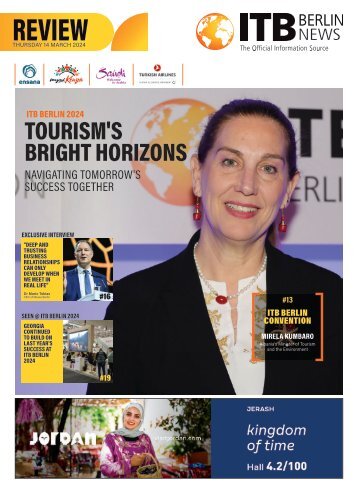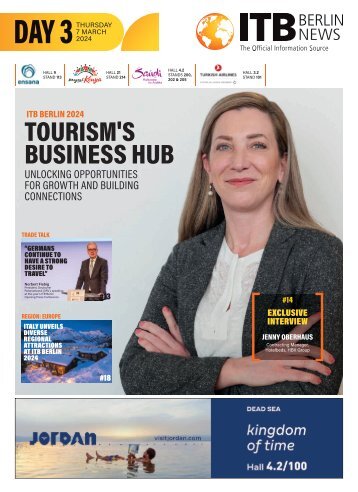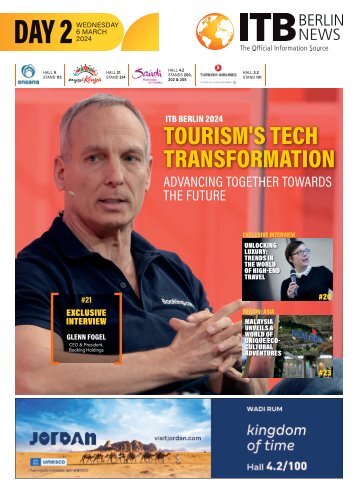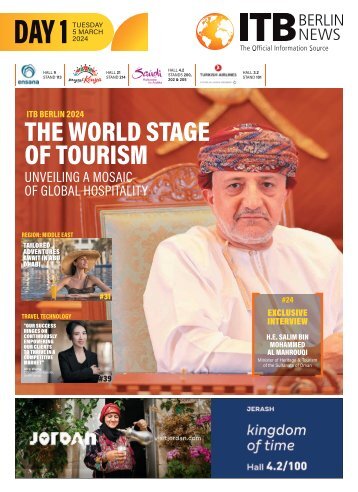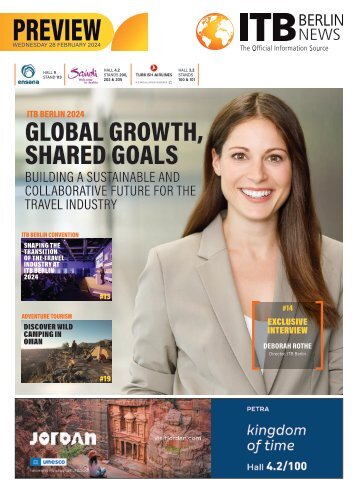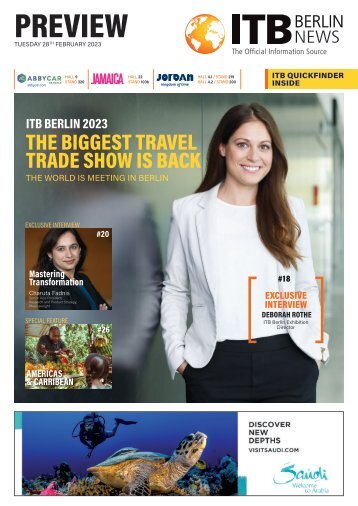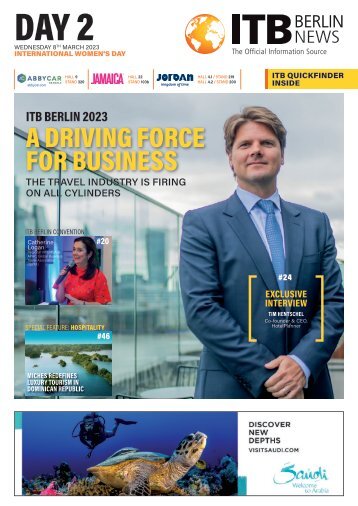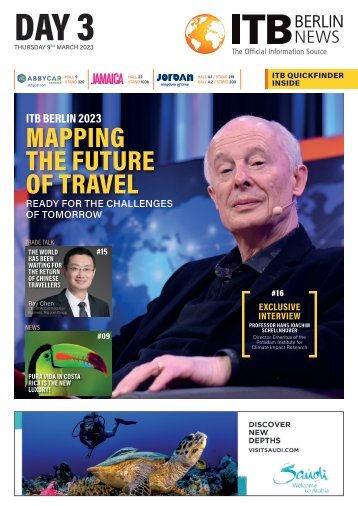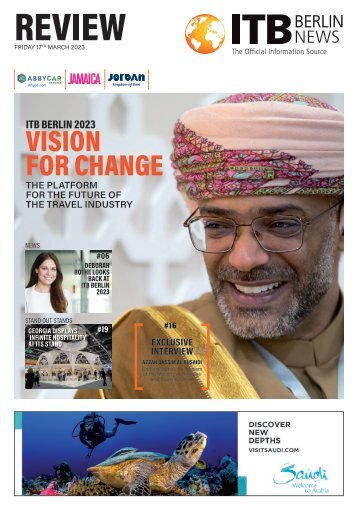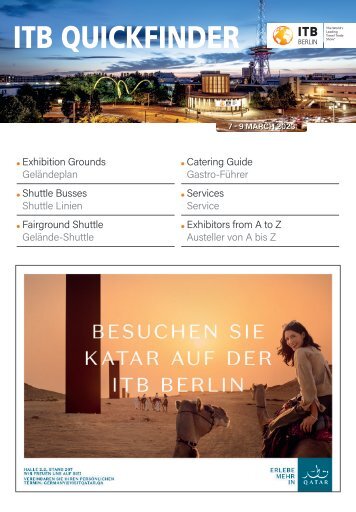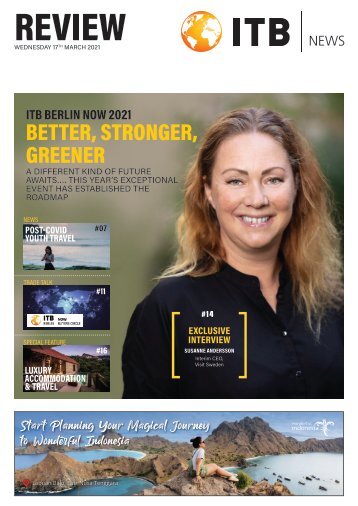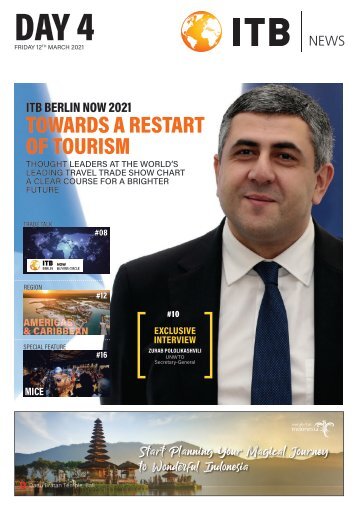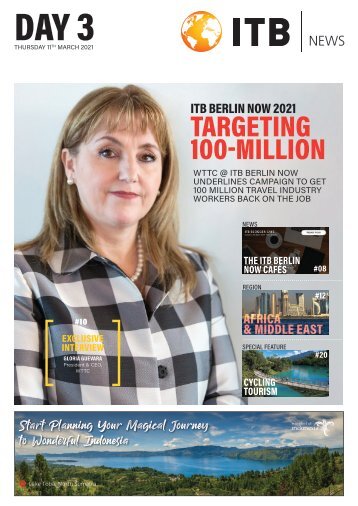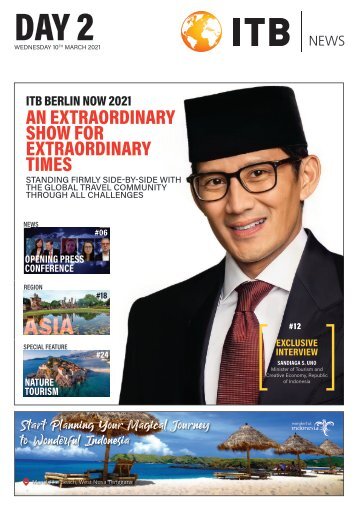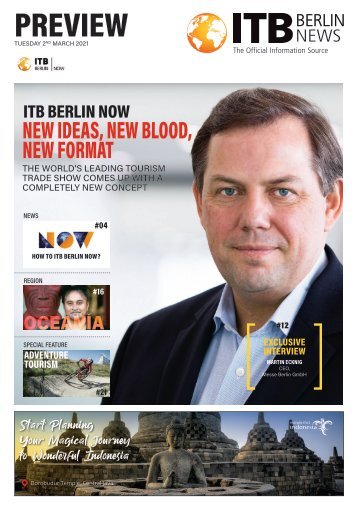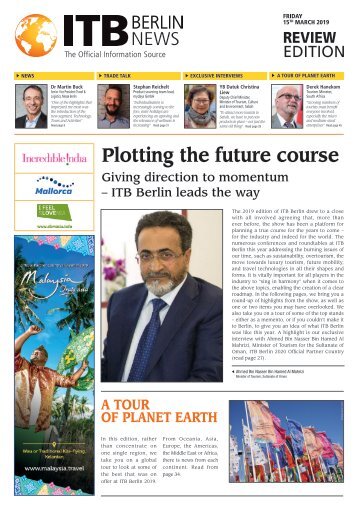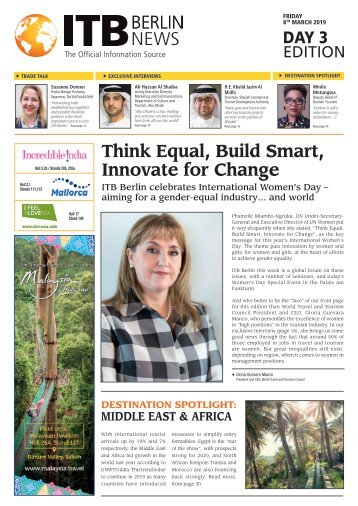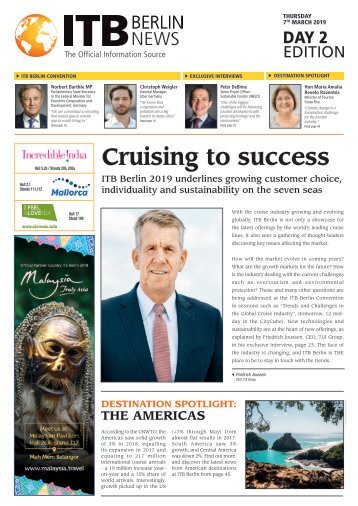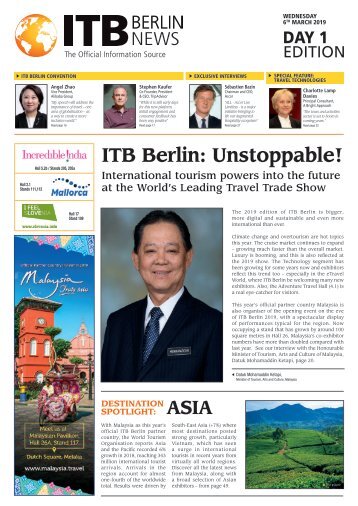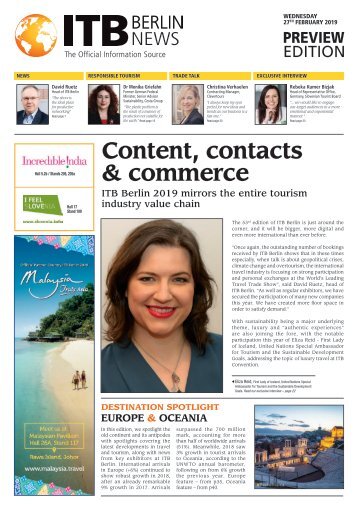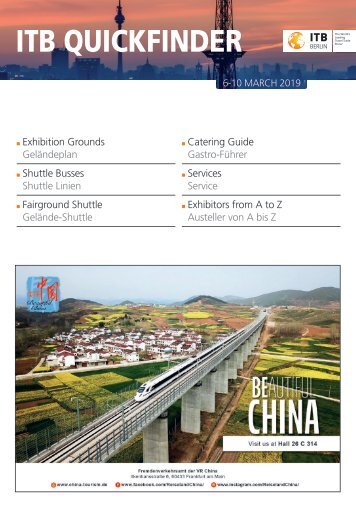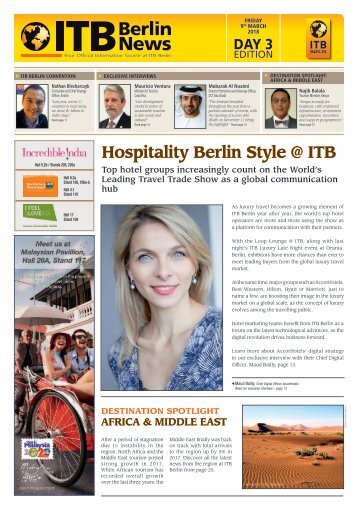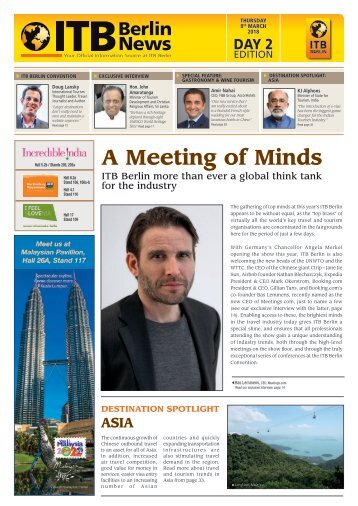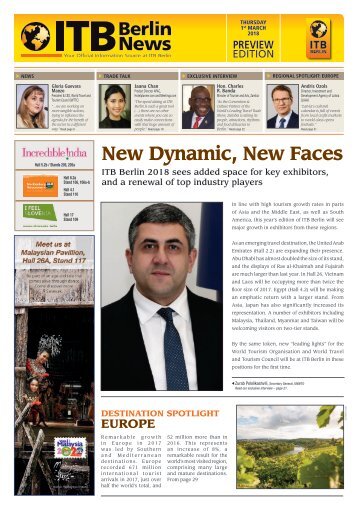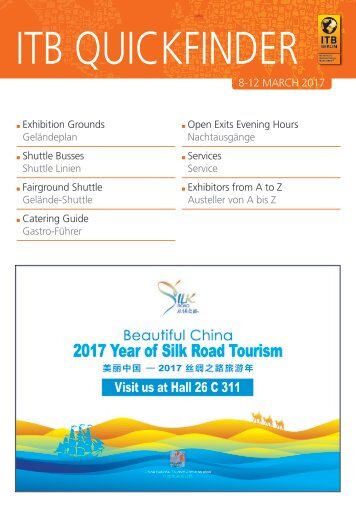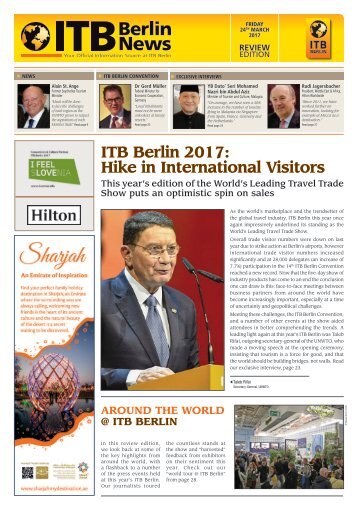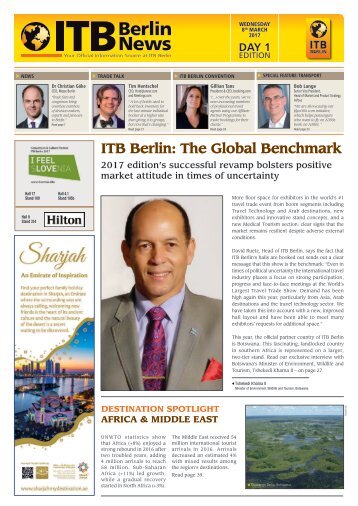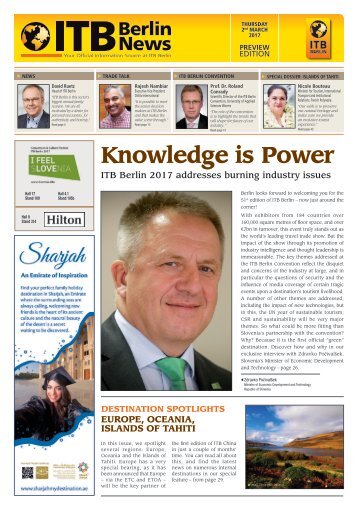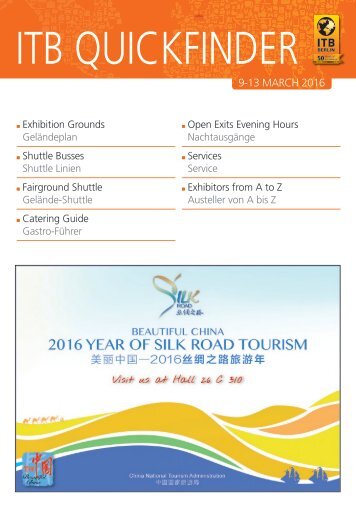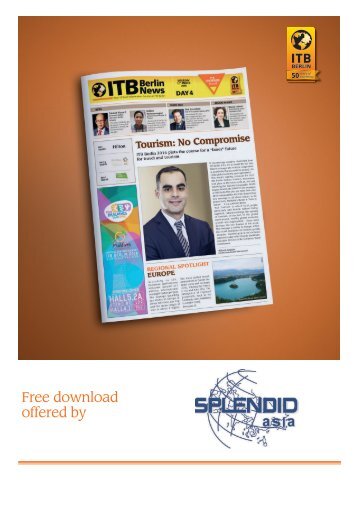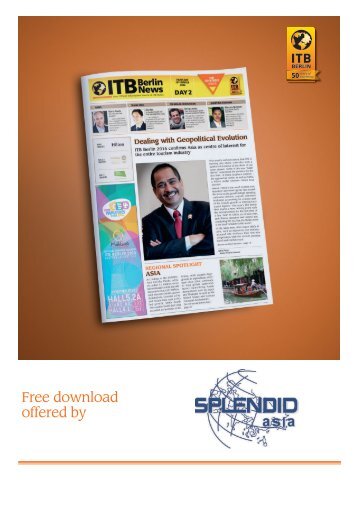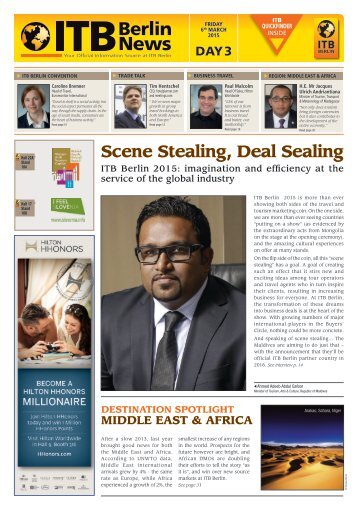
ITB Berlin News - Day 3
- Text
- Hotels
- Tourism
- Tours
- Resort
- Berlin
- Resorts
- Tourismus
- Halle
- Exhibitors
- Aussteller
20 SPECIAL FEATURE GROUP
20 SPECIAL FEATURE GROUP TRAVEL Kings of MICE in SE Asia Singapore continues to stand our as a “MICE hub” in the region Marina Bay Sands Property Neeta Lachmandas –Sekellariou Assistant Chief Executive, Singapore Tourism Board Marina Bay Sands – the Growing Importance of MICE Singapore – home to ITB Asia – has always been a very strong business hub. That has not changed, although perhaps it is much stronger, and continues to grow. We asked Neeta Lachmandas–Sekellariou, Assistant Chief Executive, Singapore Tourism Board, to tell us more about the new impetus of the STB in promoting the destination in particular for MICE. From the MICE perspective, a couple of things have changed. The nature of our shows is quite different. Years ago, many of our exhibitions were focussed on heavy machinery, or textiles, and those shows have moved out of Singapore. It makes perfect sense, because the domestic markets in countries like Thailand and China are so strong that it makes more sense to have domestically oriented shows for these kinds of things. Take the example of heavy machinery. We are not an agricultural community here and the markets around us have developed enough for them to have their own shows. The types of MICE shows we have now are more based on service and lifestyle industries. Finance is big, IT is big, urban solutions are big… they are all economic clusters in which Singapore is seen as having a big leadership position currently. That’s number one. As what could be expected, the other thing that has changed is the type of MICE attendee or business traveller. Because in line with the growth of Asia as a business region, in line with the growth of business travel out of China or India for example, we are getting a lot more MICE attendees from around the region as well, who want to connect with other MICE delegates. We are also seeing a lot of organisers from the west coming into Singapore because they want to connect with these Asian MICE attendees who are now travelling and looking for business. Tell us more about the MICE strategy. We have a medium term strategy, which is called the MICE 2020 roadmap. It’s been in the making for a full year, and we have involved a lot of the “captains” of our industry together with STB in framing how we want to adopt a medium term plan to growing the MICE industry. Hall 26 A Stand 133 We asked Benny Zin, Chief Operating Officer & Vice President of Conventions & Exhibitions, Marina Bay Sands, what percentage of the Marina Bay Sands’ turnover comes from MICE and how this is evolving. Marina Bay Sands’ hotel revenue in 2014 totalled US3.9 million, up from US0 million in 2013. An increase in the number and attendance of MICE events is one of the reasons that drove hotel revenue. As a MICE-led integrated resort (IR), we ended 2014 on a strong note hosting over 2,500 events with close to 1.8 million MICE attendees. The uniqueness of Marina Bay Sands lies in our IR concept. Because of our extensive combination of facilities, the IR’s various attractions enjoy spill over effects in terms of footfall and revenue. For instance during Art Stage 2015, celebrity chef restaurant Osteria Mozza – which normally opens for dinner only – opened for walk-ins and lunch reservations in order to cater to the expected demand. This year, the leading art fair drew 51,000 visitors over five days from 21 to 25 January 2015. During ITB Asia 2014, Marina Bay Sands worked Benny Zin Chief Operating Officer & Vice President of Conventions & Exhibitions, Marina Bay Sands with Messe Berlin to stage the tradeshow’s first-ever carbon neutral event since its debut. Could you please tell us a little more about this? Under the guidance of the integrated resort’s team of sustainability experts, ITB Asia achieved several sustainable firsts for a travel trade show of such magnitude. As an ISO certified venue, Marina Bay Sands is already greener than most MICE operators to begin with. The IR was able to customise a sustainable meeting from planning stages right up to execution to help the organiser achieve its green meeting goals. As a result, ITB Asia exceeded its original 5 per cent target to record an impressive 34 per cent reduction in the overall carbon footprint, from 399 tonnes in 2012 to 262 tonnes in 2014. Total electricity consumed also saw a significant decrease of 34.5 percent from 2012. A total of 2.6 tonnes of brochures were also collected and recycled at the end of the event. The nature of such a recycling drive is a first for ITB Asia, as well as Marina Bay Sands. ITB BERLIN NEWS • Friday 6 th March 2015 www.itb-berlin-news.com
- Page 1: FRIDAY 6 th MARCH 2015 ITB QUICKFIN
- Page 6: 6 NEWS MYSTERIES OF ANCIENT PERSIA
- Page 9 and 10: NEWS 9 Rifai Calls for Industry Sup
- Page 11 and 12: ITB BERLIN CONVENTION 11 And… ACT
- Page 13 and 14: TRADE TALK 13 MICE on the Rise The
- Page 15 and 16: EXCLUSIVE INTERVIEW 15 Strength in
- Page 17: BUSINESS TRAVEL SPECIAL FEATURE 17
- Page 23 and 24: FAMILY DESTINATIONS SPECIAL FEATURE
- Page 25 and 26: FAMILY DESTINATIONS SPECIAL FEATURE
- Page 27 and 28: Hall 2.1 Stand 200 CULTURAL TOURISM
- Page 29: CULTURAL TOURISM SPECIAL FEATURE 29
- Page 33 and 34: AFRICA MIDDLE / MIDDLE EAST EAST RE
- Page 35: AFRICA / AFRICA MIDDLE EAST REGION
- Page 38: 38 WHERE TO GOIN BERLIN Chamäleon
- Page 42 and 43: EXHIBITION GROUNDS GELÄNDEPLAN Hal
- Page 44 and 45: SHUTTLE BUSSES & FAIRGROUND SHUTTLE
- Page 46 and 47: SERVICES SERVICE Airports Informati
- Page 48 and 49: EXHIBITORS FROM A TO Z AUSTELLER VO
- Page 50 and 51: EXHIBITORS FROM A TO Z AUSTELLER VO
- Page 52: EXHIBITORS FROM A TO Z AUSTELLER VO
- Page 55 and 56: D / E / F EXHIBITORS / AUSSTELLER H
- Page 57 and 58: F / G / H EXHIBITORS / AUSSTELLER H
- Page 59 and 60: H / I / J / K EXHIBITORS / AUSSTELL
- Page 61 and 62: K / L / M EXHIBITORS / AUSSTELLER H
- Page 63 and 64: M / N / O EXHIBITORS / AUSSTELLER H
- Page 65 and 66: O / P / Q / R EXHIBITORS / AUSSTELL
- Page 67 and 68: R / S EXHIBITORS / AUSSTELLER HALL
- Page 69 and 70: S / T EXHIBITORS / AUSSTELLER HALL
- Page 71 and 72:
T / U / V EXHIBITORS / AUSSTELLER H
Inappropriate
Loading...
Mail this publication
Loading...
Embed
Loading...
